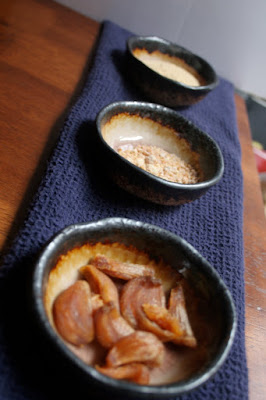Carbonation Not Just A Sensation
When you are drinking that can of cola you aren't just feeling those tiny bubbles, you are also tasting them, according to a new paper entitled "The Taste Of Carbonation". From the press release:
I saw Dave Arnold speak awhile ago where he expressed a dislike for some of the culinary uses of carbonation, citing that the effect was similar to spoilage. Combine the fact that carbonation is detected by the sense of sour, and I think this really makes sense. It took a long time for me to have any tolerance for stronger sour tastes (yogurt, sour cream), because well, they tasted like spoiled product to me.
What really blows my mind is how little we understand about something as basic as taste. Growing up, we only had sweet, sour, salty and bitter. Today we have umami (savory). Maybe future generations will have ten tastes. And each time we discover one along the way, chefs will figure out how to coax those flavors out in a delicious way.
Ryba added that the taste of carbonation is quite deceptive. "When people drink soft drinks, they think that they are detecting the bubbles bursting on their tongue," he said. "But if you drink a carbonated drink in a pressure chamber, which prevents the bubbles from bursting, it turns out the sensation is actually the same. What people taste when they detect the fizz and tingle on their tongue is a combination of the activation of the taste receptor and the somatosensory cells. That's what gives carbonation its characteristic sensation."There are two crazy factoids here. The first is that the sensation is identical when the bubbles aren't bursting, which seems to defy logic. You'd think there would be some sensory difference. Second, somewhere people are drinking and dining in a pressure chamber.
The scientists found that if they eliminated CA-IV from the sour-sensing cells or inhibited the enzyme's activity, they severely reduced a mouse's sense of taste for carbon dioxide. Thus CA-IV activity provides the primary signal detected by the taste system. As CA-IV is expressed on the surface of sour cells, Chandrashekar and co-workers concluded that the enzyme is ideally poised to generate an acid stimulus for detection by these cells when presented with carbon dioxide.Given that CA-IV is expressed on the surface of sour cells, and that we can mask sour flavors using Miraculin (the active ingredient in Miracle Fruit) and other taste-modifiers, can we do some home brew experiments at home? I suspect you will still taste the fizz with Miraculin/Soda as I think Miraculin is used as a sweetener in soft drinks in Asia.
Why do mammals taste carbonation? The scientists are still not sure if carbon dioxide detection itself serves an important role or is just a consequence of the presence of CA-IV on the surface of the sour cells, where it may be located to help maintain the pH balance in taste buds. As Ryba says, " That question remains very much open and is a good one to pursue in the future."
I saw Dave Arnold speak awhile ago where he expressed a dislike for some of the culinary uses of carbonation, citing that the effect was similar to spoilage. Combine the fact that carbonation is detected by the sense of sour, and I think this really makes sense. It took a long time for me to have any tolerance for stronger sour tastes (yogurt, sour cream), because well, they tasted like spoiled product to me.
What really blows my mind is how little we understand about something as basic as taste. Growing up, we only had sweet, sour, salty and bitter. Today we have umami (savory). Maybe future generations will have ten tastes. And each time we discover one along the way, chefs will figure out how to coax those flavors out in a delicious way.



Comments
Post a Comment